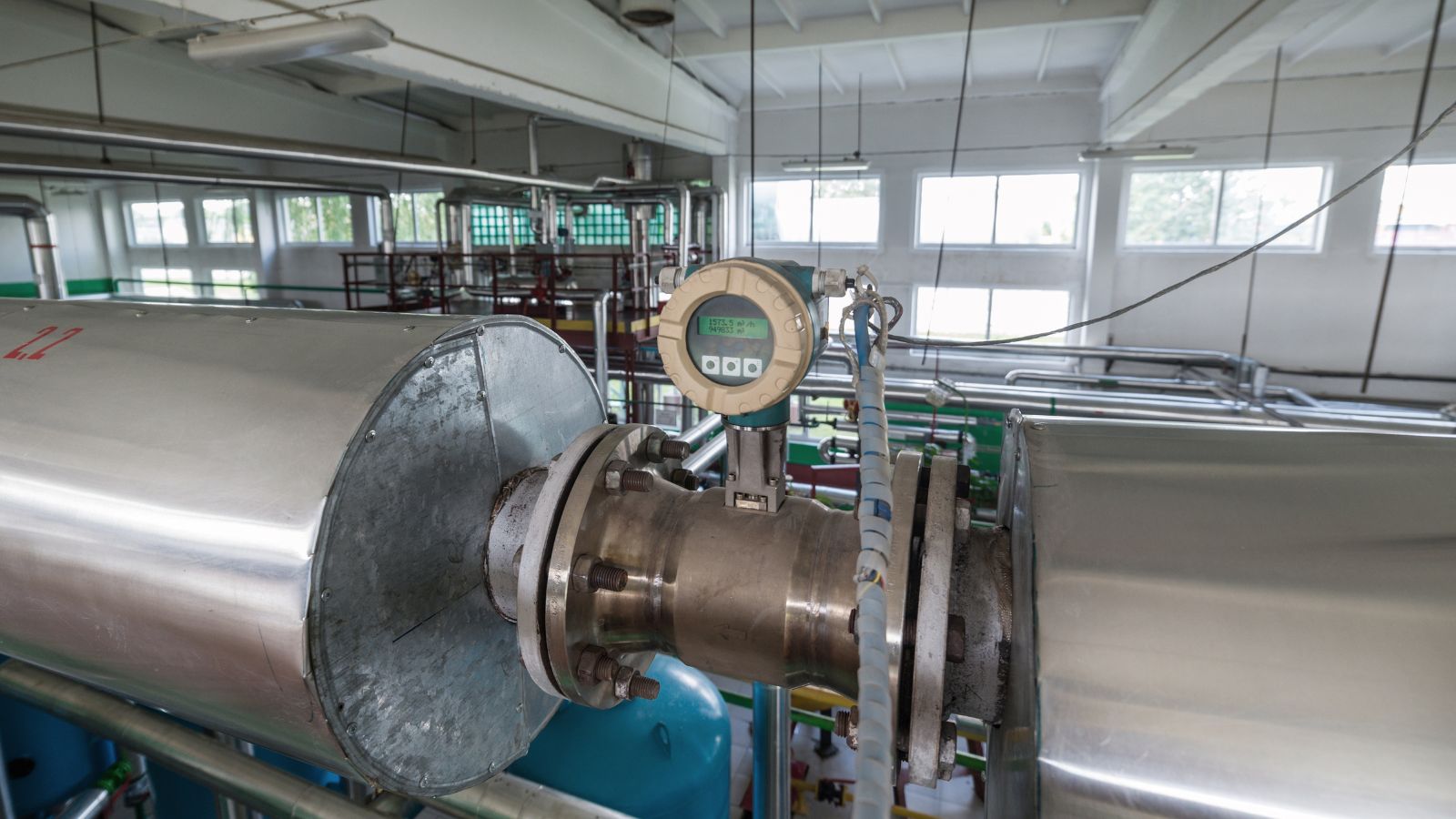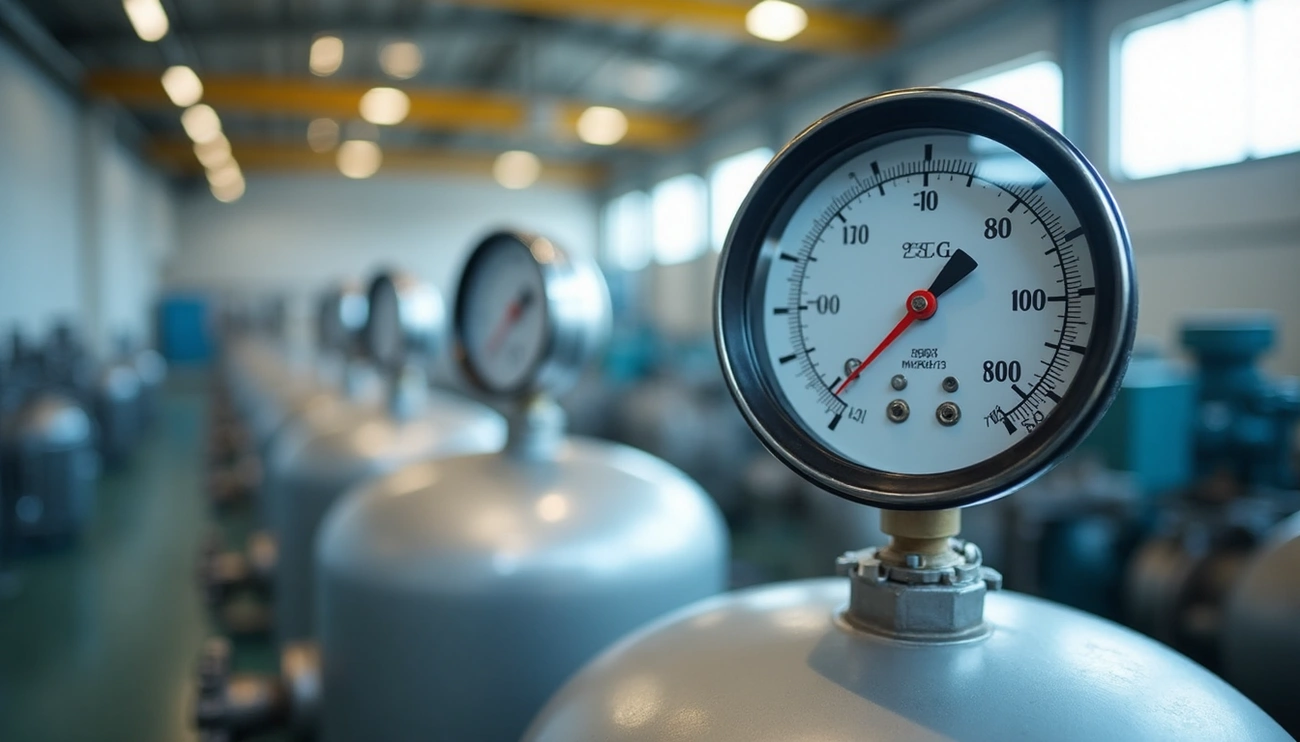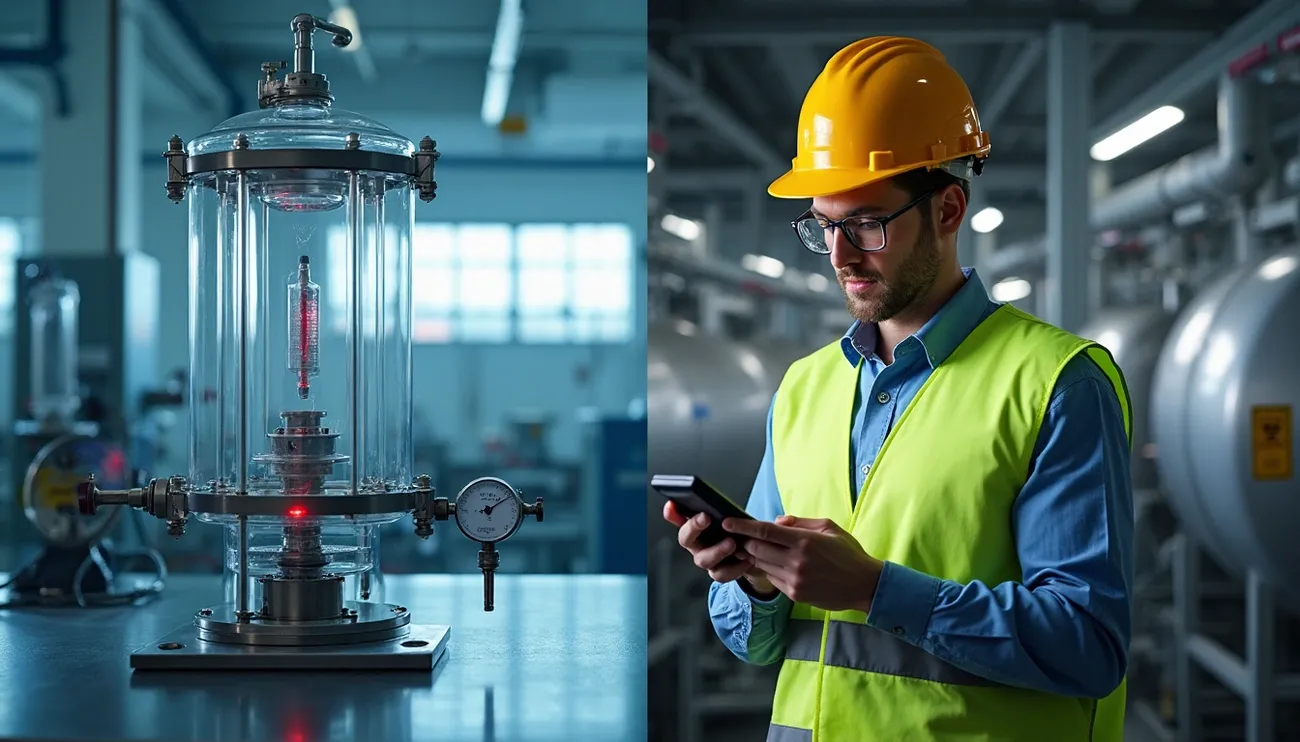Industrial RTD Sensors are resistance thermometers with fixed or replaceable sleeves for applications up to 600°C. Equipped with low-pressure, high-pressure welded or open-hole thermocouple tube bores that can be screwed in or welded into the process. Manufactured to the highest quality, our sensors maximize the performance of your system and minimize costly downtime.
Introduction to RTD Sensors
Industrial RTD sensors are crucial components in temperature measurement systems, playing a vital role in ensuring accuracy and reliability in various industrial processes. RTD, which stands for Resistance Temperature Detector, is widely used across industries to measure temperature with high precision. This section will provide a comprehensive introduction to RTD sensors, shedding light on their significance in industrial applications.
RTD sensors are widely recognized for their ability to provide accurate and stable temperature measurements, making them indispensable in industries where precise temperature control is critical. The accuracy and reliability of RTD sensors make them ideal for applications in sectors such as manufacturing, pharmaceuticals, petrochemicals, and food processing. The ability of RTD sensors to deliver precise temperature readings with minimal drift over time makes them a preferred choice for industries that demand high standards of quality and efficiency.
In industrial settings, the accurate measurement of temperature is essential for maintaining product quality, optimizing processes, and ensuring the safety of personnel and equipment. RTD sensors play a pivotal role in achieving these objectives by providing temperature data that is dependable and consistent. The next sections will delve deeper into the technology behind RTD sensors, the various types available, and their applications across different industries.
Importance of Accurate Temperature Measurement
Accurate temperature measurement is a fundamental requirement in numerous industrial processes, where even slight variations can have significant implications for product quality, process efficiency, and safety. In sectors such as pharmaceuticals, food processing, and chemical manufacturing, precise temperature control is essential for ensuring the integrity of products and the effectiveness of manufacturing processes.
The consequences of inaccurate temperature measurement in industrial settings can range from compromised product quality to equipment malfunction and safety hazards. RTD sensors address these challenges by providing highly accurate temperature readings, thereby enabling industries to maintain tight control over their processes and uphold stringent quality standards. The importance of accurate temperature measurement cannot be overstated, as it serves as a cornerstone for optimizing production processes and ensuring compliance with industry regulations.
In addition to maintaining product quality and process efficiency, accurate temperature measurement is also critical for ensuring the safety of personnel and equipment in industrial environments. By using RTD sensors to monitor and control temperature, industries can minimize the risks associated with overheating, overcooling, or fluctuations in temperature, thereby safeguarding both their assets and their workforce. The precision and reliability of RTD sensors make them indispensable tools for meeting the demanding requirements of modern industrial operations.
Understanding RTD Sensor Technology
The technology behind RTD sensors is rooted in the principle of electrical resistance variation in response to temperature changes. RTD sensors are designed to exploit the predictable relationship between a material’s resistance and its temperature, making use of this characteristic to accurately measure temperature. Most RTD sensors are constructed using platinum (Pt) as the sensing element, owing to its stable and linear resistance-temperature characteristics over a wide range.
The fundamental operation of an RTD sensor is based on the principle that the electrical resistance of a material changes predictably with fluctuations in temperature. This change in resistance is then measured and converted into an accurate temperature reading using specialized instrumentation. The use of platinum as the sensing material in RTD sensors is driven by its favorable attributes, including high stability, repeatability, and resistance to corrosion, making it an ideal choice for industrial temperature measurement applications.
The precision and reliability of RTD sensor technology stem from the well-established relationship between the resistance of the platinum element and the temperature being measured. This linear and predictable behavior allows for exceptionally accurate temperature readings, with RTD sensors capable of achieving high levels of precision and stability over extended periods of use. The next section will explore the different types of RTD sensors available and their specific characteristics and applications.
Types of industrial RTD sensors
RTD sensors are available in various types, each offering distinct advantages and suitability for specific industrial applications. The two primary configurations of RTD sensors are wire-wound and thin-film, each with its unique construction and performance characteristics. Understanding the differences between these types of RTD sensors is essential for selecting the most suitable option based on the requirements of a particular industrial process or application.
• Assemble RTDs
• Explosion-proof thermal resistance
• Armored RTDs
• Anti-corrosion thermal resistance
• End thermal resistance
• Socket RTD
Fields and applications of industrial RTD sensors
RTD sensors find extensive application across a wide spectrum of industries, where precise and reliable temperature measurement is essential for operational efficiency and product quality. In the pharmaceutical sector, RTD sensors play a critical role in monitoring and controlling temperature during the production and storage of drugs and vaccines, ensuring that strict quality standards are upheld throughout the process. Similarly, in the food processing industry, RTD sensors are utilized to maintain precise temperature control in various stages of production, preserving the freshness and safety of food products.
The petrochemical industry relies on RTD sensors for monitoring temperature in refining processes, storage tanks, and transportation facilities, where accurate temperature measurement is vital for ensuring the integrity and safety of volatile substances. Furthermore, in manufacturing environments, RTD sensors are employed to regulate temperature in equipment such as ovens, furnaces, and extruders, supporting efficient production processes and consistent product quality. The versatility and reliability of RTD sensors make them indispensable across diverse industrial applications, contributing to enhanced operational performance and product integrity.
RTD Sensor vs Thermocouple: A Comparison
RTD sensors and thermocouples are two of the most commonly used temperature measurement devices in industrial applications, each offering distinct advantages and considerations. Understanding the differences between RTD sensors and thermocouples is essential for selecting the most suitable option based on the specific requirements of an industrial process or application. This section will provide a comprehensive comparison of RTD sensors and thermocouples, highlighting their respective characteristics, performance, and suitability for different industrial environments.
RTD sensors are known for their high accuracy, stability, and linearity, making them well-suited for applications that demand precise and consistent temperature measurement. The use of platinum as the sensing element in RTD sensors contributes to their superior accuracy and resistance to drift, ensuring reliable temperature readings over extended periods of use. In contrast, thermocouples operate on the principle of Seebeck effect, where a voltage is generated in response to temperature variations at the junction of dissimilar metals, making them suitable for a wide temperature range and rugged environments.
While RTD sensors offer exceptional accuracy and stability, thermocouples excel in applications requiring a wide temperature measurement range, high vibration resistance, and rapid response times. The choice between RTD sensors and thermocouples depends on factors such as temperature range, accuracy requirements, environmental conditions, and budget considerations. By understanding the distinct characteristics and performance attributes of RTD sensors and thermocouples, industries can make informed decisions regarding the selection of the most appropriate temperature measurement device for their specific needs.
Choosing the Right RTD Sensor Probe
Selecting the right RTD sensor probe is crucial for ensuring optimal performance and reliability in temperature measurement applications. The choice of RTD sensor probe depends on factors such as the temperature range, environmental conditions, mechanical robustness, and compatibility with the target industrial process. This section will provide valuable insights into the considerations involved in choosing the right RTD sensor probe, offering guidance to industrial professionals seeking to optimize their temperature measurement systems.
When selecting an RTD sensor probe, it is essential to consider the temperature range within which the probe will operate, ensuring that it aligns with the requirements of the industrial process. Additionally, factors such as vibration, moisture, chemical exposure, and mechanical stress should be evaluated to determine the appropriate construction and materials for the sensor probe. For applications involving aggressive environments or high temperatures, a rugged and corrosion-resistant RTD sensor probe is essential to maintain accurate and reliable temperature measurement.
The mechanical design of the RTD sensor probe, including its dimensions, mounting options, and connection interfaces, should be compatible with the installation requirements and space constraints of the industrial process. Furthermore, the selection of the appropriate probe sheath material, such as stainless steel or Inconel, plays a critical role in ensuring the durability and performance of the RTD sensor probe in challenging operating conditions. By carefully considering these factors and consulting with temperature measurement experts, industries can make informed decisions when choosing the right RTD sensor probe for their specific applications.
Installation and Maintenance of RTD Sensors
Proper installation and regular maintenance are essential for maximizing the performance and longevity of RTD sensors in industrial applications. The correct installation of RTD sensors involves considerations such as sensor location, mounting methods, wiring practices, and protection against environmental factors. This section will provide comprehensive guidance on the installation and maintenance of RTD sensors, offering best practices to ensure the accuracy and reliability of temperature measurement systems.
During the installation of RTD sensors, it is crucial to position the sensors in close proximity to the target measurement point, minimizing thermal lag and ensuring accurate temperature readings. Care should be taken to secure the sensors using appropriate mounting hardware and techniques, while also considering factors such as vibration, mechanical shock, and exposure to corrosive substances. The wiring of RTD sensors should be performed in accordance with industry standards, utilizing shielded cables and proper grounding to minimize electromagnetic interference and ensure accurate signal transmission.
Regular maintenance of RTD sensors involves periodic calibration, inspection of wiring connections, and assessment of the sensor’s physical condition to detect any signs of wear or damage. Calibration procedures should be carried out using traceable standards to verify the accuracy of temperature measurements and make necessary adjustments if deviations are detected. Additionally, the environmental conditions surrounding the RTD sensors should be monitored to prevent the accumulation of contaminants or the onset of conditions that could compromise the sensor’s performance.
Advancements in RTD Sensor Technology
The field of RTD sensor technology has witnessed significant advancements in recent years, driven by innovations in materials, manufacturing processes, and sensor design. These advancements have led to the development of RTD sensors with improved accuracy, response times, and reliability, expanding their suitability for a broader range of industrial applications. This section will explore the latest developments in RTD sensor technology, highlighting the benefits and implications of these advancements for industrial temperature measurement systems.
One of the notable advancements in RTD sensor technology is the integration of advanced materials and coatings to enhance the durability and performance of sensor elements in challenging environments. By leveraging materials with superior corrosion resistance, mechanical strength, and thermal conductivity, modern RTD sensors can withstand harsh operating conditions while maintaining accurate temperature measurement. Furthermore, advancements in manufacturing techniques have enabled the production of RTD sensors with finer tolerances, resulting in increased accuracy and repeatability.
The integration of digital communication protocols and smart sensor capabilities represents another significant advancement in RTD sensor technology, allowing for seamless integration with industrial control systems and data acquisition platforms. This enables real-time monitoring, diagnostics, and remote configuration of RTD sensors, enhancing the visibility and control of temperature measurement processes in industrial facilities. Additionally, the miniaturization of RTD sensor components and the development of distributed sensing solutions have expanded the versatility and applicability of RTD sensors in diverse industrial environments.
Conclusion
In conclusion, industrial RTD sensors play a pivotal role in ensuring accurate temperature measurement, contributing to the efficiency, safety, and quality of industrial processes across various sectors. The precision, reliability, and versatility of RTD sensors make them indispensable tools for maintaining tight control over temperature and upholding stringent quality standards in industrial environments. By understanding the technology, types, applications, and advancements in RTD sensor technology, industries can make informed decisions regarding the selection, installation, and maintenance of RTD sensors to optimize their temperature measurement systems.
CTA: For expert guidance and solutions in industrial temperature measurement using RTD sensors, contact [SenTec] today to explore our comprehensive range of products and services tailored to meet your specific needs.




